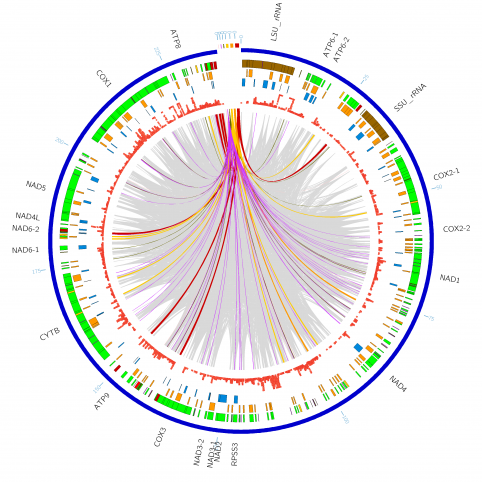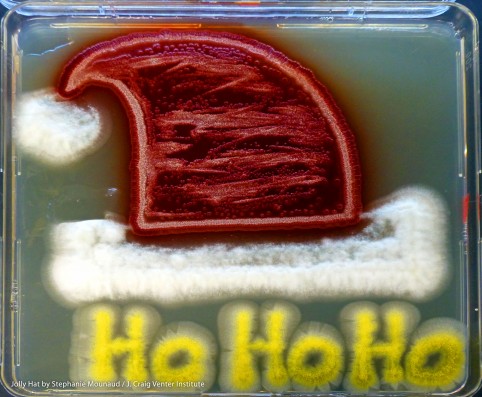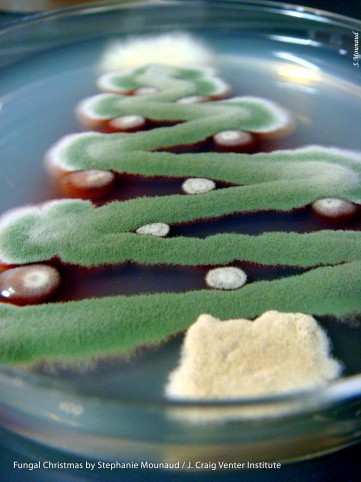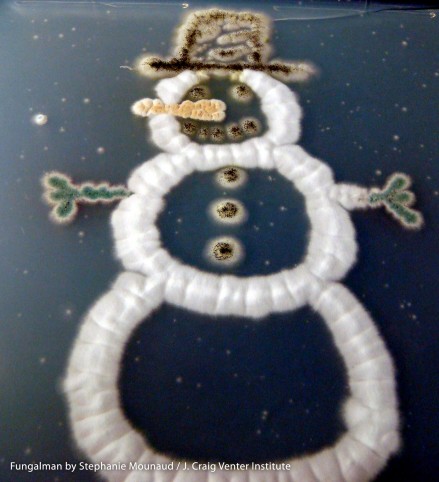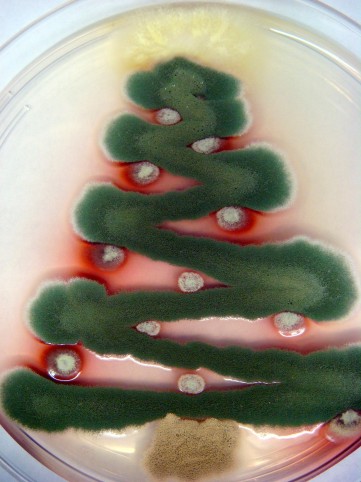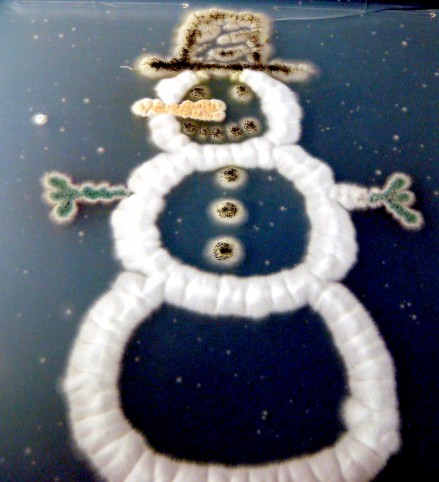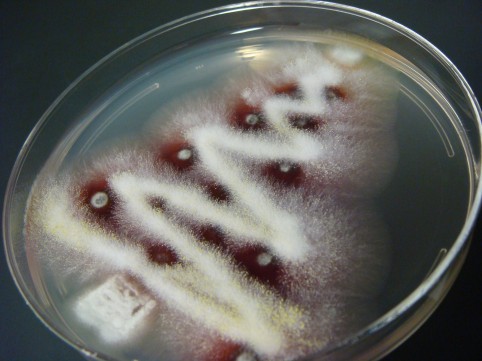It has been another year and with that more fungus in my life (and another more human bundle of joy). I tried my best to get these fungus to behave (and my children) but we can’t always control them. So below is my newest artwork. It says Warm Wishes and is as cozy and warm (and fuzzy) of a cabin I could get with fungus. Enjoy and happy holidays to you.
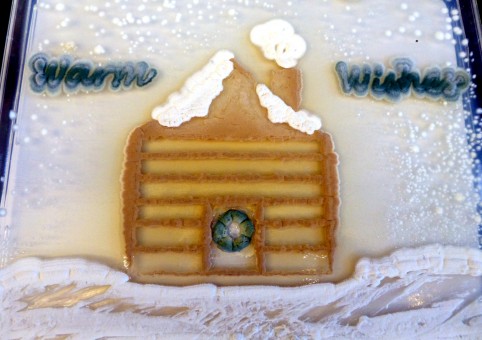
Snow and smoke: Neosartorya fischeri 181; Wreath and ‘Warm wishes’: Aspergillus nidulans A4; Cabin: Aspergillus terreus 20843. Image: Stephanie Mounaud / JCVI
Inoculating loops roasting in an open fire
The negative 80 nipping at your fingers
The incubators beeping like a choir
And the aroma of bacteria just seems to linger
Everybody knows resistance and recombination
Help to give us such a fright
Teeny Tiny Bacteria with their constant mutations
Will make it hard for us to sleep at night
But they all know that scientists will find a way
We’re using sequencing and synthetic life
And every single strand of DNA
To see if we can really end the lifelong strife
And so really think before you join the craze,
You will be in the lab every day.
Although it’s rewarding, many times we’re in a daze
But we do take a break for the happy holidays!

